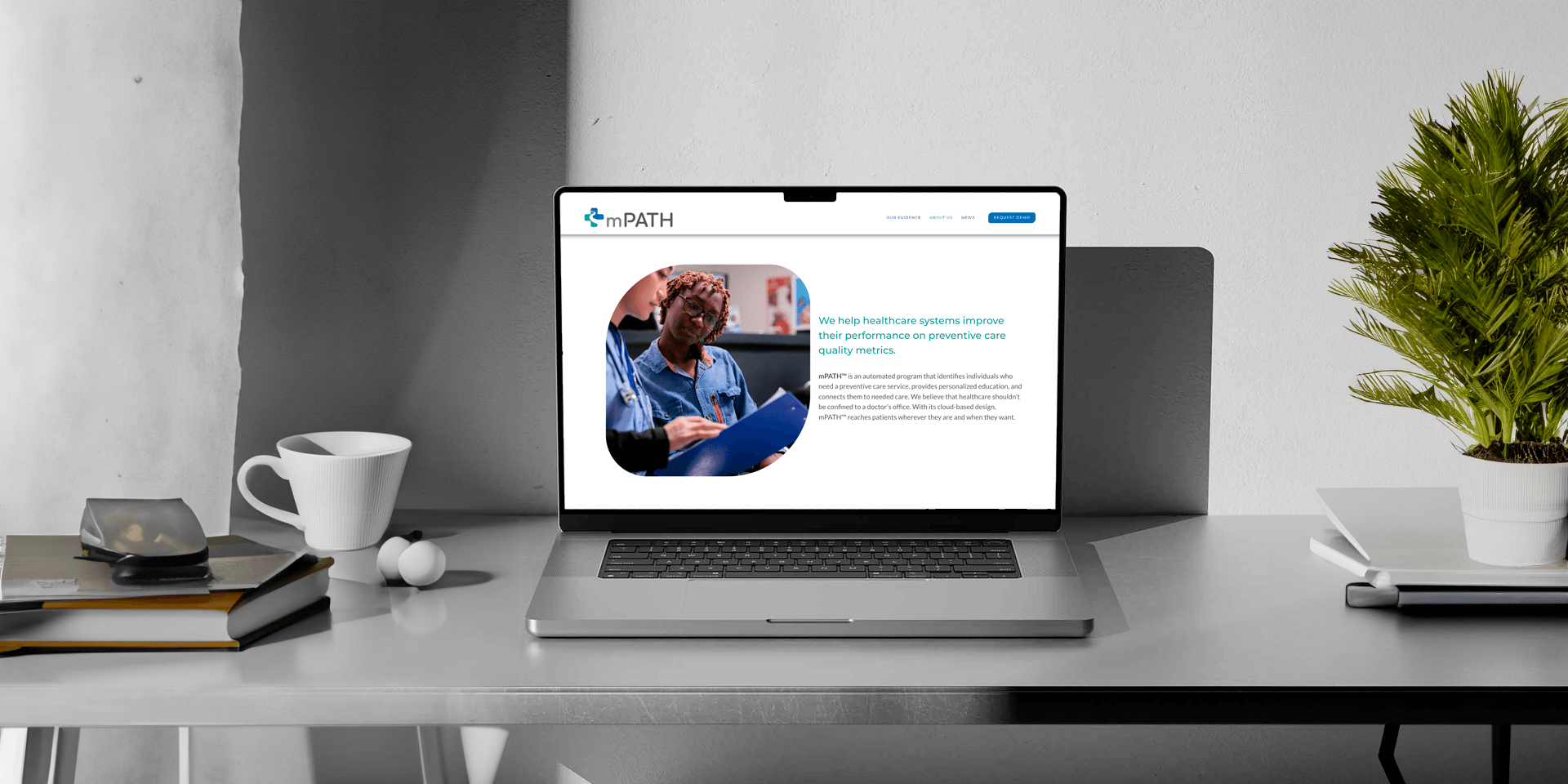Founded by two faculty physicians from Wake Forest University School of Medicine, the cloud-based web application was created to help increase preventative health screenings. But what started as an altruistic and scientific project grew, and as the founders realized the impact they could have by scaling their application, they also understood they would need the right developers to ensure the technological underpinnings of their product were secure, simple and effective. For that, they turned to Dualboot Partners.
The opportunity
The idea for mPATH came from real-world professional experience. Both Dr. Dave Miller, co-founder and CEO, and Dr. Ajay Dharod, co-founder and CTO, had seen what happened when individuals delayed or avoided preventative screenings. As it turned out, the problem was rampant: Over 1/3 of Americans are missing out on life-saving cancer screenings. Over 90% of those who are high-risk for lung cancer – the leading cause of cancer deaths in the U.S. – are not receiving screenings for the disease. And more than 30% of Americans do not receive screenings for colorectal cancer, which is the second leading cause of cancer death.
Screenings for these diseases save lives, and yet the process to encourage those screenings has long been cumbersome and ineffective. Healthcare systems generally default to two main methods: First, they blast patient portal (“MyChart”) or text messages to patients. However, while reminders are helpful, they are often not enough to educate patients on the importance of these screenings, nor does it motivate them to take action. The second option is what Miller calls a “full-court press,” in which nurses and medical technicians are asked to call patients one by one, assess them for the screening and encourage them to schedule. This option is time-consuming and expensive, engaging key medical staff members in a laborious game of phone tag.
Both Miller and Dharod understood the potential of technology to streamline operations within the medical field and increase the impact of care. Miller has embraced computers since his first Atari 800, and before Dharod became a physician, he studied computer and electrical engineering at Clemson University. They knew technology had the power to solve the problem with missed screenings, and they used it to create mPATH.
And it worked. Miller and Dharod put mPATH through a research study funded by the National Institutes of Health, and the results were profound: When it comes to colorectal cancer, increasing screening rates by 15 to 20% is considered very successful. Miller and Dharod’s application had an increase of 100%.
From the start, the plan was always to build mPATH and then offer it to healthcare systems for free. However, when the results were published in the Annals of Internal Medicine, one of the top medical journals in the world, calls started coming in from health systems across the country. They wanted what Miller and Dharod had built.
“We realized that it’s great to say we’re going to give our application away for free, but then who will maintain and scale it? To make the kind of impact we wanted to make, we had to commercialize our business so it could develop and innovate and scale,” Dharod said.

The solution
That is where Dualboot Partners came in.
The specifications from the mPATH team were clear: We needed to ensure the process was simple for patients, scalable to serve healthcare systems of all sizes and secure to protect patient confidentiality.
To create simplicity, our developers worked to ensure mPATH operates as a cloud-based web application, meaning patients can access it whenever and wherever they want without having to download a separate application.
To create scalability, we automated the screening process, from beginning to end. The application functions by taking lists of patients who the healthcare system thinks may be overdue or in need of screening. mPATH sends those patients automatic text messages that provide them with a link to learn more about the screening. That link takes them to the mPATH application where the algorithm determines if they need the screenings. It also assesses for risk factors and shows patients an animated video to educate and motivate them to follow through.
After the video, patients can request a screening directly through mPATH, either by having a test ordered and sent directly to their home or by scheduling an appointment. All of this happens without the patient ever setting foot in their primary care doctor’s office.
Another key element for the mPATH team was the speed of the onboarding process. So we built the application to exist outside the electronic medical records system and to require a minimal data lift: With mPATH, customers have to upload a 9-item .CSV file about once a week. The result: The mPATH team can spin up a new client in two to three days.
We would not have been able to accelerate at the rate we’re accelerating without Dualboot Partners. When you’re looking to scale, having really nimble and capable dev ops is critical.

Cassie Allen
Head of Commercial Development at mPATH

The impact
To date, over 70,000 patients have used mPATH for lung and colorectal screening, and the plan is to roll out modules for additional screenings in the coming years. Also on the product roadmap for mPATH: the addition of AI to target its outreach messaging to overcome the most likely barriers in following through with the screening process.
By 2028, the mPATH team hopes to support 8 million patients across the United States.
mPATH has also hit on a bottom-line benefit to the healthcare systems it serves: When patients skip screenings tests, healthcare organizations miss out on billions of dollars in both the testing services and the downstream care that never occurs. By increasing use of screening services, mPATH generates $6.5 million in extra yearly revenue for average-sized health systems – a conservative estimate to be sure. Another bonus: More screenings lead to improved patient outcomes, which increase quality-based reimbursements for healthcare systems across the board.
“We generate tremendous return on investment for health systems,” Miller said. “And we are improving care and saving lives.”